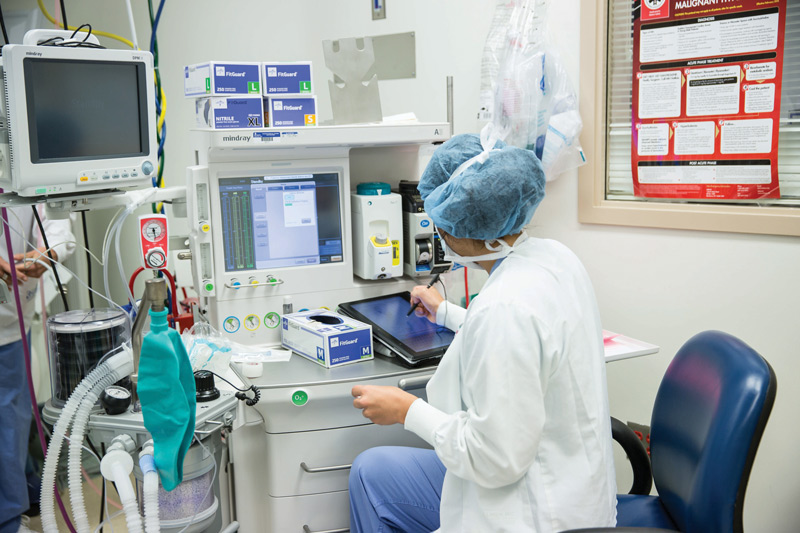 DUAL PURPOSE A few simple steps can prepare anesthesia machines to provide life-saving treatments.
DUAL PURPOSE A few simple steps can prepare anesthesia machines to provide life-saving treatments. The FDA this week approved repurposing anesthesia machines as ventilators in an emergency-use authorization intended to increase access to life-saving treatments for COVID-19 patients. In response to the FDA's decision, the American Society of Anesthesiologists issued guidance on the safe use of anesthesia machines as ventilators.
Michael McLaughlin, DNP, CRNA/APN, an assistant professor and assistant program director at the Rutgers School of Nursing's Nurse Anesthesia program in Newark, N.J., has seen up close the desperate need for ventilators — he's heard of facilities hooking six COVID-19 patients up to a single ventilator. With the coronavirus crisis essentially bringing elective surgeries to a halt and many ORs sitting empty, Dr. McLaughlin is promoting a simple hack that converts unused anesthesia breathing circuits into life-saving machines.
Converting an anesthesia machine to a ventilator, which Dr. McLaughlin says can be done by an anesthesia professional in a matter of minutes, involves adding heat and humidity exchange filters to the breathing circuit and removing the anesthetic gas vaporizers. The heat and humidity exchange filters, which Dr. McLaughlin says most surgical facilities have on hand, are crucial to the machines' use as ventilators because they add humidity to the breathing circuit to ensure the patient has a moist breathing environment. They also filter out bacteria and viruses, which helps to keep the breathing circuit clean and safe to use.
Dr. McLaughlin notes hospitals are likely doing the conversions to their own machines in dormant ORs. "Most hospitals right now that are experiencing shortages have either put this into play or have been set up to do it, such as where I practice anesthesia now," said Dr. McLaughlin. "I have a different role, which is caring for COVID-19 patients in an ICU setting. We could put these patients on anesthesia machines at any time if we need to."
.svg?sfvrsn=be606e78_3)
.svg?sfvrsn=56b2f850_5)